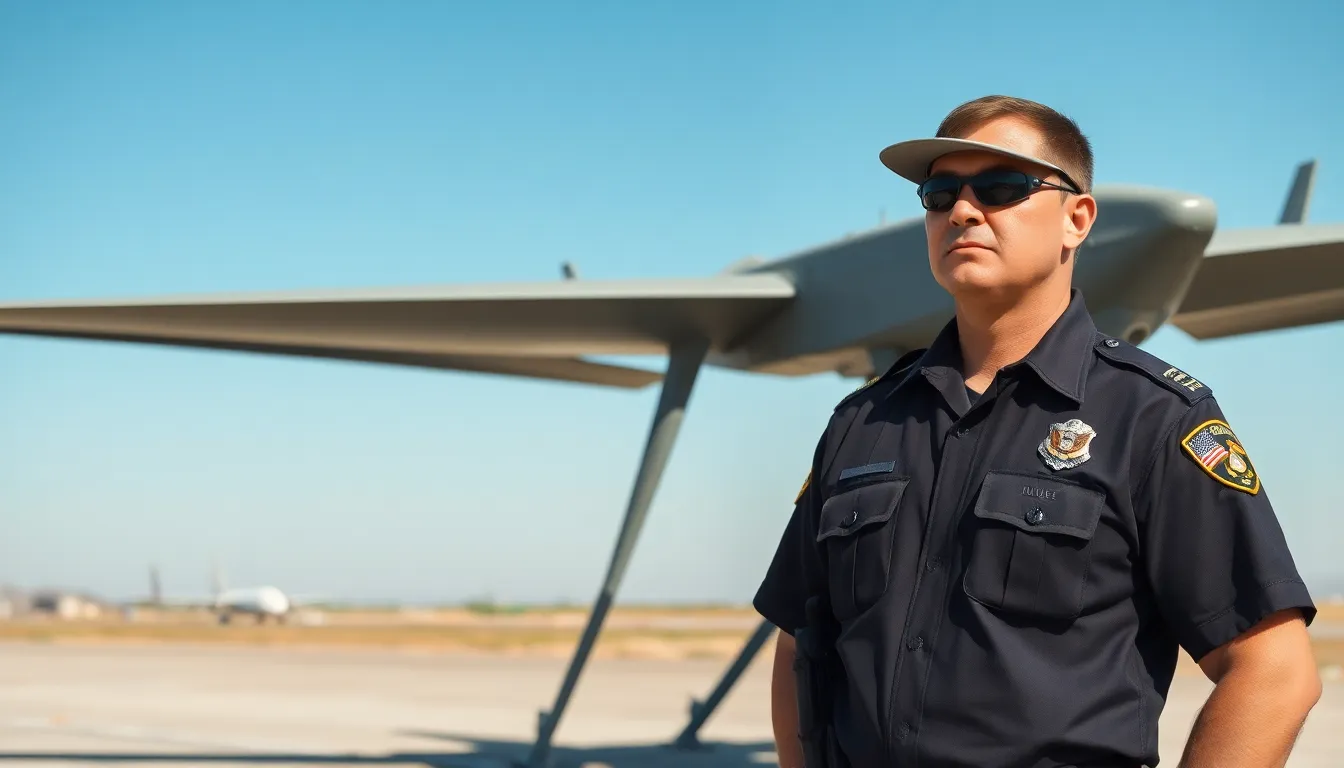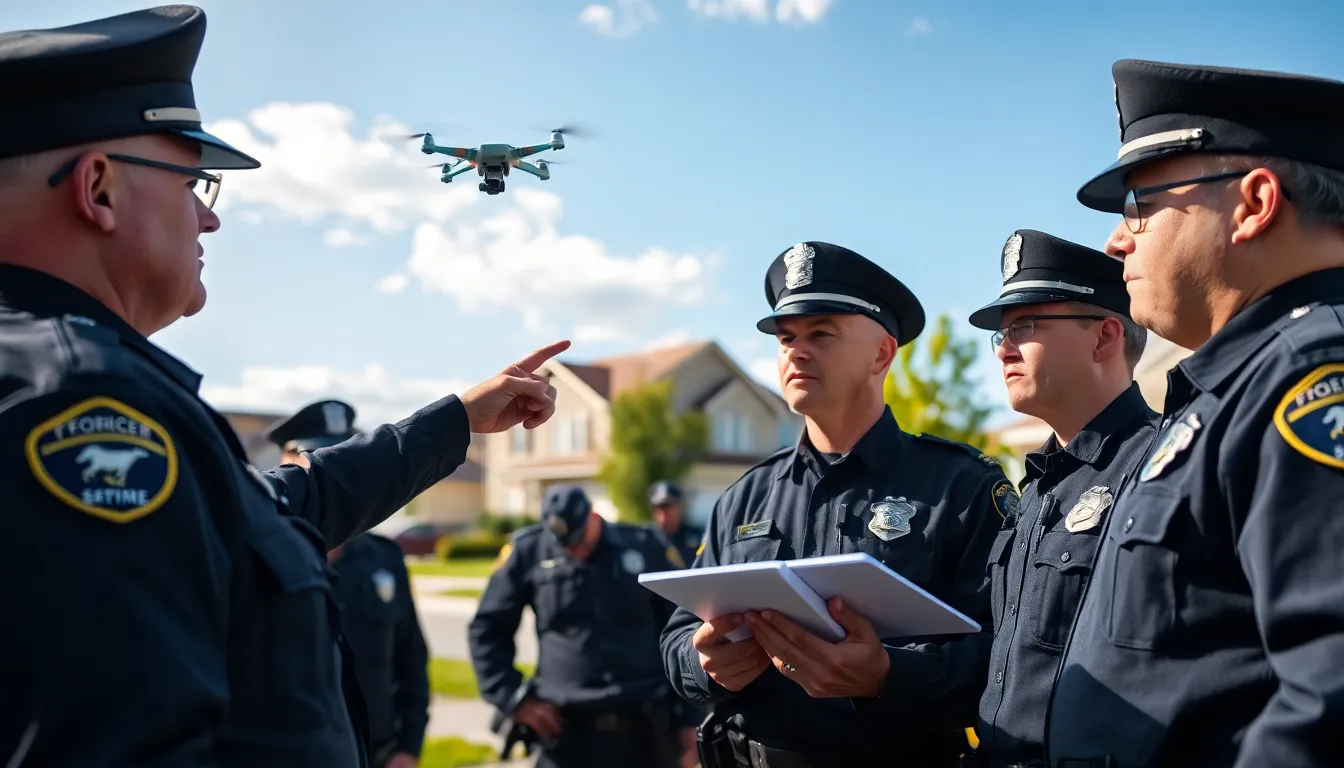Drones are the new kids on the block, buzzing around like they own the place. They’re great for capturing stunning aerial shots or delivering snacks right to your doorstep. But what happens when these flying machines invade personal space or privacy? Suddenly, that friendly neighborhood drone feels more like an unwanted guest at a party.
Table of Contents
ToggleOverview of Shooting Down Drones
Shooting down drones involves various methods and considerations that dictate the approach taken. Current legislation permits individuals in specific contexts to neutralize drones that invade privacy or pose threats. This legal framework varies significantly across jurisdictions, allowing for differing levels of response.
Certain technologies are employed for drone interception. These include firearms, net guns, and electronic jamming devices. Each method carries its advantages and risks, often influenced by the environment and the drone’s nature. For instance, net guns capture drones without causing permanent damage, while electronic jamming disrupts their control signals.
Safety considerations play a crucial role in the decision-making process. Hitting a drone can inadvertently target people or properties. Therefore, maintaining situational awareness is essential before attempting neutralization.
Drones used for surveillance or spying often trigger heightened responses. Instances of harassment or unauthorized surveillance can justify defensive actions. In these cases, it’s vital to document the drone’s activities and report them to appropriate authorities.
Legal implications must also be considered. Individuals can face criminal charges for improperly shooting down drones. Compliance with local laws ensures that responses are appropriate and justified.
Awareness of drone technology is increasing among security personnel and civilians alike. Discussions about the implications of drone usage and the subsequent responses contribute to a broader understanding of airspace management. This ongoing dialogue reflects societal concerns over privacy and security in an age dominated by aerial innovations.
Legal Aspects of Shooting Down Drones

Legal considerations arise when addressing the issue of shooting down drones, particularly concerning international laws and national regulations.
International Laws
International laws governing the use of drones emphasize state sovereignty and airspace control. Nations commonly uphold principles that restrict unauthorized use of military force in foreign airspace. Treaties like the Chicago Convention underline the obligations of states to safeguard their airspace from intrusions. Additionally, the use of force against drones can lead to violations of international humanitarian laws in conflict zones. Response measures must align with these laws to prevent international disputes or conflicts. Each nation interprets these rules differently, reflecting unique perspectives on drone usage and regulation.
National Regulations
National regulations surrounding drone interception vary widely. In many countries, specific laws dictate the acceptable circumstances for shooting down drones. Regulations often classify drones under the same guidelines as aircraft, necessitating justifiable reasons for any action taken. In the United States, laws restrict individuals from taking lethal actions against drones without consent from law enforcement. Violations of these regulations can result in serious legal consequences, including fines or imprisonment. Many regions also require individuals to report unauthorized drone activity to authorities rather than taking direct action themselves, providing a safer method for addressing drone-related concerns.
Methods for Shooting Down Drones
Various methods exist for neutralizing drones that threaten privacy or security. Techniques range from electronic countermeasures to physical destruction options, each serving specific situations and risks.
Electronic Countermeasures
Electronic countermeasures focus on disrupting the communication between a drone and its operator. Jamming devices can interfere with signals, causing the drone to become unresponsive or return to its origin. These devices vary in power, often depending on the operating frequency of the drone. Notably, electronic measures pose lower risk to surrounding people and property compared to physical methods. However, using jamming technology can contravene regulations in some jurisdictions. Understanding local laws is vital before deploying these countermeasures.
Physical Destruction
Physical destruction involves directly targeting the drone to neutralize its threat. Methods include firearms, net guns, and other projectile devices, each offering distinct advantages. Firearms can immediately eliminate the drone but pose high risks to nearby individuals and structures. Net guns provide a safer alternative, capturing drones without causing damage, yet they require precise aim. Regulations surrounding physical destruction can vary widely. Many jurisdictions enforce strict guidelines, demanding individuals justify their actions before engaging in physical deterrence.
Implications of Shooting Down Drones
Shooting down drones carries significant implications for security and public safety. Understanding these aspects is crucial for responsible decision-making.
Security Concerns
Unauthorized drone activity raises security concerns. Drones can gather sensitive information, such as surveillance footage, posing risks to privacy and national security. In regions with tensions, rogue drones might serve as tools for espionage or terrorism. Making informed decisions about drone neutralization requires awareness of past incidents that compromised security. Individuals targeting drones must consider their potential to escalate conflicts. Legal repercussions also accompany the act of shooting down a drone, especially if it turns out to be operated by a government entity or unauthorized agency. Each incident emphasizes the importance of adhering to protocol and reporting suspicious drone activities to appropriate authorities.
Public Safety Risks
Public safety risks arise when engaging drones. Mistakes during a shooting can result in unintended injuries to bystanders or collateral damage to property. Drones often operate in populated areas, heightening the chance of accidents. Damage to vital infrastructure, such as power lines or communication networks, can disrupt services and threaten safety. Consequences of shooting down a drone extend beyond immediate impacts; they can lead to legal claims and regulatory scrutiny. Engaging in responsible actions, like contacting law enforcement, ensures public safety and minimizes risks associated with direct action. Always prioritizing safety safeguards against unnecessary tragedies and legal complications.
The rise of drone technology brings both opportunities and challenges. While drones can enhance various aspects of life, their potential for intrusion raises valid concerns. Engaging with unauthorized drones requires careful consideration of safety and legal implications.
Shooting down drones may seem like a straightforward solution but can lead to unintended consequences. It’s crucial for individuals to understand their rights and local laws before taking any action. Reporting suspicious drone activity to authorities often provides a safer and more effective resolution.
As society navigates this evolving landscape, awareness and responsible actions will play key roles in balancing the benefits of drone technology with the need for privacy and security.




